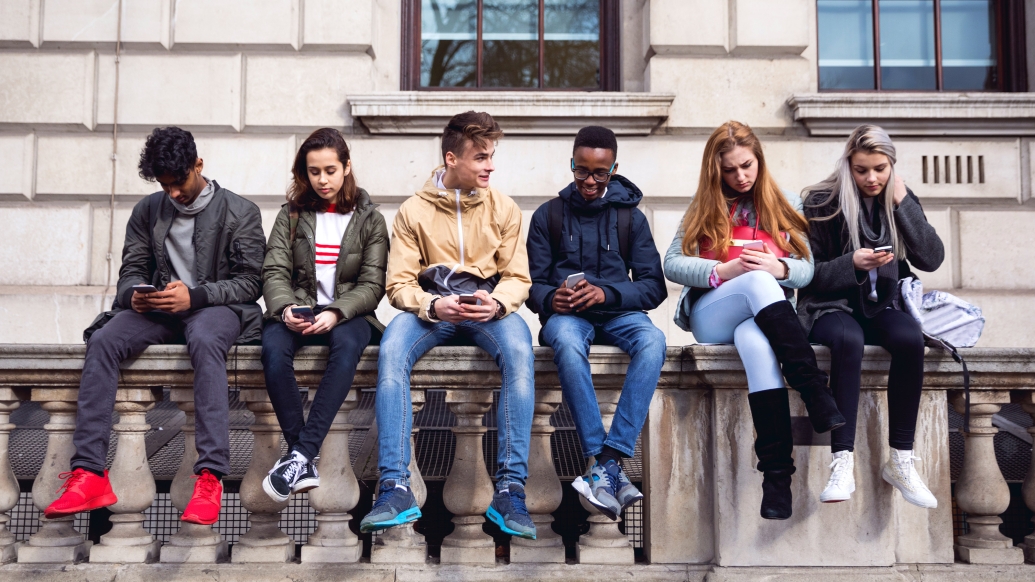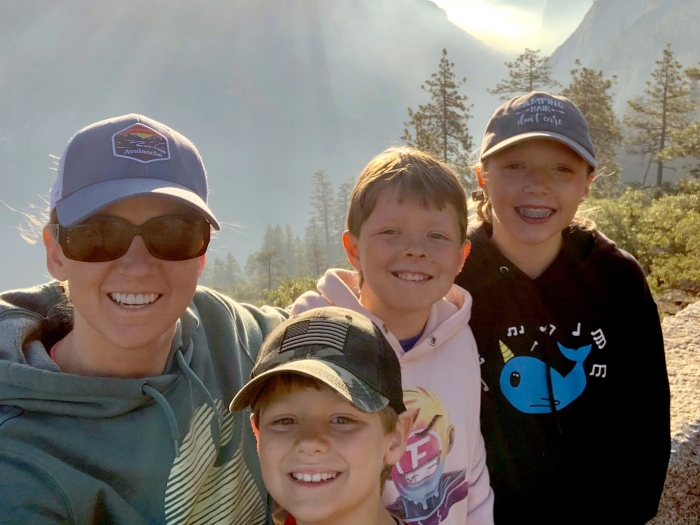In the wake of a Surgeon General’s advisory, experts offer tips for families of teens and tweens
4:50 PM
Author |

A recent advisory by the United States Surgeon General, Vivek Murthy, M.D., discusses the complex interaction between youth social media use and mental health.
Michigan Medicine experts agree that young people are particularly vulnerable.
The adolescent brain
The reason has to do with what’s going on in the brains of tweens, teens and young adults.
Brain development continues from childhood into the teen years and lasts through the mid-20s.
The prefrontal cortex, an area of the brain involved in decision making and emotional and behavioral regulation, does not fully develop until ages 21 to 25.
“In adolescence, the area of the brain that’s involved in reward, the limbic system, is operating in a robust way much earlier than the prefrontal cortex,” said Joanna Quigley, M.D., associate professor of psychiatry and pediatrics and medical director of child and adolescent psychiatry at Michigan Medicine.
“Sensation seeking, risk taking and the reward system is really lighting up while our executive function, the prefrontal cortex, is developing over that period, and there can be a big disconnect.”
In other words, teen brains are more primed to value the rewards of social media use than to heed the risks.
Social media use and mental health trends in teens
As a result, “it’s no surprise to learn that teens are on screens and online a lot,” said Emily Bilek, Ph.D., ABPP, clinical associate professor in psychiatry.
In 2022, 95% of teens reported having a smart phone and nearly all teens report having a smart phone by age 13. Most teens use YouTube, TikTok, Instagram and/or Snapchat daily and 46% of teens say they use the internet “almost constantly.”
At the same time, teen mental health issues are on the rise. A recent national study of high school students found an increase in symptoms of depression including consideration of attempting suicide, making a suicide plan or attempting suicide.
This simultaneous rise, documented in other studies, has fueled concern that social media use has combined with other factors to fuel a sharp rise in mental health issues in teens.
What influences mental health and social media use?
But in fact, Bilek said, “we should remember that most of the studies are not causal, meaning they cannot tell us whether social media is what caused a change in mental health.”
Even without cause and effect studies, research has suggested three factors that are correlated with the relationship between social media and mental health outcomes:
- Age of access – youth who report gaining access or owning a smartphone earlier have worse scores on standard mental health scales
- Amount of use – in younger teens (11-15) more social media use may be worse for mental health but in older teens (16+) some use seems helpful for mental health
- Sex – the impact of social media on mental health is typically worse for girls
Pros and cons of social media
When it comes to social media, it’s not all bad news.
Youth can form online friendships or a sense of belonging in an online community, which can help them feel “feel understood, supported and that their identity matters,” said Bilek.
The vastness of social media can foster creativity, too, as every possible interest, hobby or craft has an online community. Social media channels, particularly YouTube, host high-quality educational content which can be an enriching study tool.
However, not every space is safe and supportive on the internet. Teens can face exposure to harmful content, dangerous people, privacy concerns or cyber bullying.
“It’s really important to talk about internet safety with kids to tell them how to handle one of these issues when it arises,” Bilek said.
“They can feel a lot of despair and problem solving goes out the window, so feeling like they can always come to a caregiver who they trust will be a safeguard in scary or dangerous situations.”
Advice from teens
A recent Michigan Medicine study asked youth aged 14-24 across the United States about how they perceive and regulate their own social media usage, and what advice they’d give to others their age and younger. The study was conducted via the text message based MyVoice program, and found that young people were very aware of the mental impacts social media might have.
“We really wanted to get a perspective from youth themselves, to understand how they are feeling about their own social media use and what advice they would give their peers,” said Jane Harness, D.O., a clinical assistant professor in psychiatry who led the study when she was doing advanced training at U-M.
Some advice young people offered coincided with professional guidelines including:
- Avoid interacting with people you don’t know online
- Mute negative accounts
- Use in-app reminders of time spent on the app in a day
- Be kind online
- Don’t forget about real life
Young people in the study also offered additional advice to their peers that the professional guidelines didn’t cover:
- Avoid basing your worth on likes or comments
- Do your own research because not everything presented as fact is true
- Remember the widespread use of photo editing apps
- Take breaks from social media or delete the app or account when you need to
Practical guidelines, healthy habits
Although more data is necessary to fully understand how social media use impacts mental health outcomes in teens, “caution and moderation are beneficial regardless,” Bilek said.
It can be difficult to implement at first, but having an open conversation with your children and modeling good behavior is a good starting point.
Strike up a conversation about creating a family media plan. “You can start with humble inquiry or curiosity with your kid around this because a lot of them will have more self-awareness than you might realize,” Quigley said.
“Youth really learn from their families about social media use. Model healthy social media use by keeping family time screen free and learn about app settings and tools together,” Harness said.
“There is no perfect amount of social media time for all individuals. Think about your values, what’s right for you and your family and for your child, and hopefully make some decisions that feel sustainable or you and your family,” Bilek concluded.
Resources:
If you or someone you’re with is having a life-threatening psychiatric emergency, please call 911.
For mental health crises and urgent concerns, dial 988 for the National Suicide and Crisis Lifeline: https://988lifeline.org/
For useful information, please visit the U-M Department of Psychiatry Mental Health Resource List.
Step-by-step instructions for setting positive boundaries on Instagram, TikTok and YouTube
Create or Update Your Family Media Plan
Technosapiens – recent research explained by a psychologist who studies the relationship between social media and media health in youth.
American Academy of Child & Adolescent Psychiatry Facts For Families Guide
The American Academy of Pediatrics Parenting Website

Explore a variety of health care news & stories by visiting the Health Lab home page for more articles.

Department of Communication at Michigan Medicine
Want top health & research news weekly? Sign up for Health Lab’s newsletters today!





